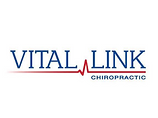

FREQUENTLY ASKED QUESTIONS REGARDING CHIROPRACTIC CARE
Dr. Rocco Diana, DC
ARE CHIROPRACTORS "REAL DOCTORS"?
A chiropractic degree involves 5 academic years after completing undergraduate prerequisites, earning the title of doctor. Chiropractors do not prescribe drugs and/or perform surgery. During the time a medical doctor would study pharmacology, a chiropractor learns nutrition, physiotherapy, and exercise protocols to help treat patients holistically. He uses his extensive knowledge of anatomy and physiology to enhance a patient’s own ability to heal and promote optimum bodily function.
WHAT'S DIFFERENT ABOUT VITAL LINK CHIROPRACTIC?
Vital Link is a state-of-the-art chiropractic facility. It integrates 110 years of chiropractic science with nutrition, physiotherapy and therapeutic exercise. Our patients have the advantage of having three doctors conferring on proper diagnosis and treatment of their condition. So, even for those who have not had success with other chiropractors, Vital Link may be a completely different experience for them.
DOES GETTING ADJUSTED HURT?
The two main factors involved in making sure manipulation is not uncomfortable are that the patient is relaxed, and that the doctor employs good technique. If a patient has trust, and can relax, the doctor can deliver a painless adjustment. By the doctor delivering a painless adjustment, a patient can learn to relax. It is always important that a patient give the doctor honest feedback at all times during their care.
BUT AREN'T CHIROPRACTORS JUST "BACK DOCTORS"?
Not exactly. Although the science of chiropractic was born out of treating many conditions through adjustment of the spine, it has diversified a great deal. Chiropractic now has many specialties, but the majority of the profession focuses on the treatment of musculoskeletal dysfunction and pain syndromes. A chiropractor graduating within the last 20 years has been extensively educated in orthopedics and neurology, radiology, and trauma. Treatment of auto and work accidents, extremity injuries (such as the knee, shoulder, wrist, etc.) are a daily routine. Research shows that chiropractic provides a faster return to work than traditional medical treatment.
IS IT DANGEROUS TO CRACK MY OWN BACK?
Although some temporary relief may occur, hearing a “crack” when one forces a body part one way or another does not compare at all to a chiropractic adjustment. It is not specific or accurate in any way. Done without training, self-manipulation can be dangerous. If done repetitively, it will lead to ligament laxity and joint instability. Chiropractors consult other doctors of chiropractic, rather than self-treating, so that adjustments remain specific, accurate, and effective.
IS MANIPULATION OF THE NECK DANGEROUS?
Statistically, manipulation is incredibly safe. A chiropractor will review your family and personal health history, perform screening maneuvers and often take x-rays to rule out any contraindications to manipulation. The benefits to manipulation greatly outweigh the risk factors. Statistics say you have a much greater chance of harming yourself by regularly taking anti-inflammatory medication.
ARE X-RAYS REQUIRED?
Adhering to the solemn promise of “first do no harm”, our doctors may decide x-rays of the site they are treating are necessary. X-rays allow the doctor to rule out bone pathology, identify arthritic changes as well as identify postural faults and/or bone misalignment. Many times, it will depend on one’s age or possibly a history of trauma to the area. In some cases, the doctor may order specialized test like MRI, CT, or ultrasound scans to uncover the true origin of one’s problem. The results and implications of these tests will be thoroughly explained by the doctor.
ARE ANTI-INFLAMMATORY MEDICATIONS AND MUSCLE RELAXERS BAD?
Depending on the severity of the condition, medications in these categories can often help one through the toughest part of an injury. However, medications can become physically or psychologically addictive. Chronic use can cause internal organs to deteriorate. Above all, medications like these do not address the underlying cause of one’s condition, only the symptoms. Injuries require correction and rehabilitation so that relapse does not occur. Remember, pain is the body’s natural warning system. If it hurts, it probably is not good.
WHAT DO YOU MEAN BY "GOOD PAIN" VS "BAD PAIN"?
Bad pain refers to pain that is adversely effecting and injury. Good pain is the pain this is felt during a deep stretch or on the last turn of your morning run. The bad qualities of pain would be described as “sharp”, “stinging”, “burning”, or “biting”. Upon feeling any of these sensations, the activity you are doing is to be discontinued. In most cases, these sensations indicate new injury, or an exacerbation of an existing one. Immediate application of ice is usually the next logical step to thwart the onset of inflammation.
WHAT IS SUBLUXATION AND HOW CAN IT INTERFERE WITH MY HEALTH?
Subluxation is a term specific to chiropractic, and is used to describe the abnormal motion or position of a joint that can result in a disturbed nerve, muscle, or organ function. A gentle, specific force is applied to a joint to correct subluxation. Restoration of proper motion and position to a joint lets the nervous tissue surrounding it function normally. This is how an adjustment can correct a “pinched nerve” or serve to accelerate healing.
CAN MY JOB BE PART OF MY PROBLEM?
One’s occupation is often the cause of a problem or can serve to aggravate a condition enough that it will not improve. Psychological and physical stress on the job is common. Poor work postures and repetitive activities are the most common cause of disability. High stress levels at work can also compromise your immune system, reduce quality of sleep, and lead to many other more serious conditions.
HOW MUCH WILL ALL THIS COST?
Often, a large portion of the care is paid by your insurance carrier. However, deductibles and copays seem to grow larger every year. In any case, Vital Link Chiropractic aims to make care affordable to everyone. Ask about payment plans that are available for those with high deductibles/copays, little or no insurance coverage.
WILL I GET BETTER?
A problem can never be solved unless the origin is discovered. Once found, the chances of recovery are much greater. However, if a condition can not be entirely corrected, chiropractic management of the condition can often bring great relief and allow one to perform activities that were once impossible. Chiropractic care is effective, drugless, and does not involve the risks of surgery.
HOW LONG WILL IT TAKE?
The answer to this question is particular to each case. In general, the longer a problem has been neglected or the more severe a problem is, the longer the treatment will take. The clinic is open six days a week – evening and weekend hours are available for those who have inflexible jobs. The frequency of treatment is decreased as improvement occurs. Three stages of care are necessary to truly heal: relief, correction, and strengthening. The doctor will be able to give you a fairly accurate estimate of the length of your care.
Dr. Rocco Diana, DC
Dr. Diana graduated summa cum laude from the New York Chiropractic College in 2010, earning a Doctorate of Chiropractic degree. He is certified in Graston Technique, an instrument-assisted soft tissue technique, and FAKTR®, a dynamic process to treat soft tissue injuries. Outside the office, Rocco enjoys time hunting, fishing, bodybuilding, and golfing.
Vital Link Chiropractic is located in Moscow, Pennsylvania just 5 minutes (2.9 miles) from LONGROOTS!


